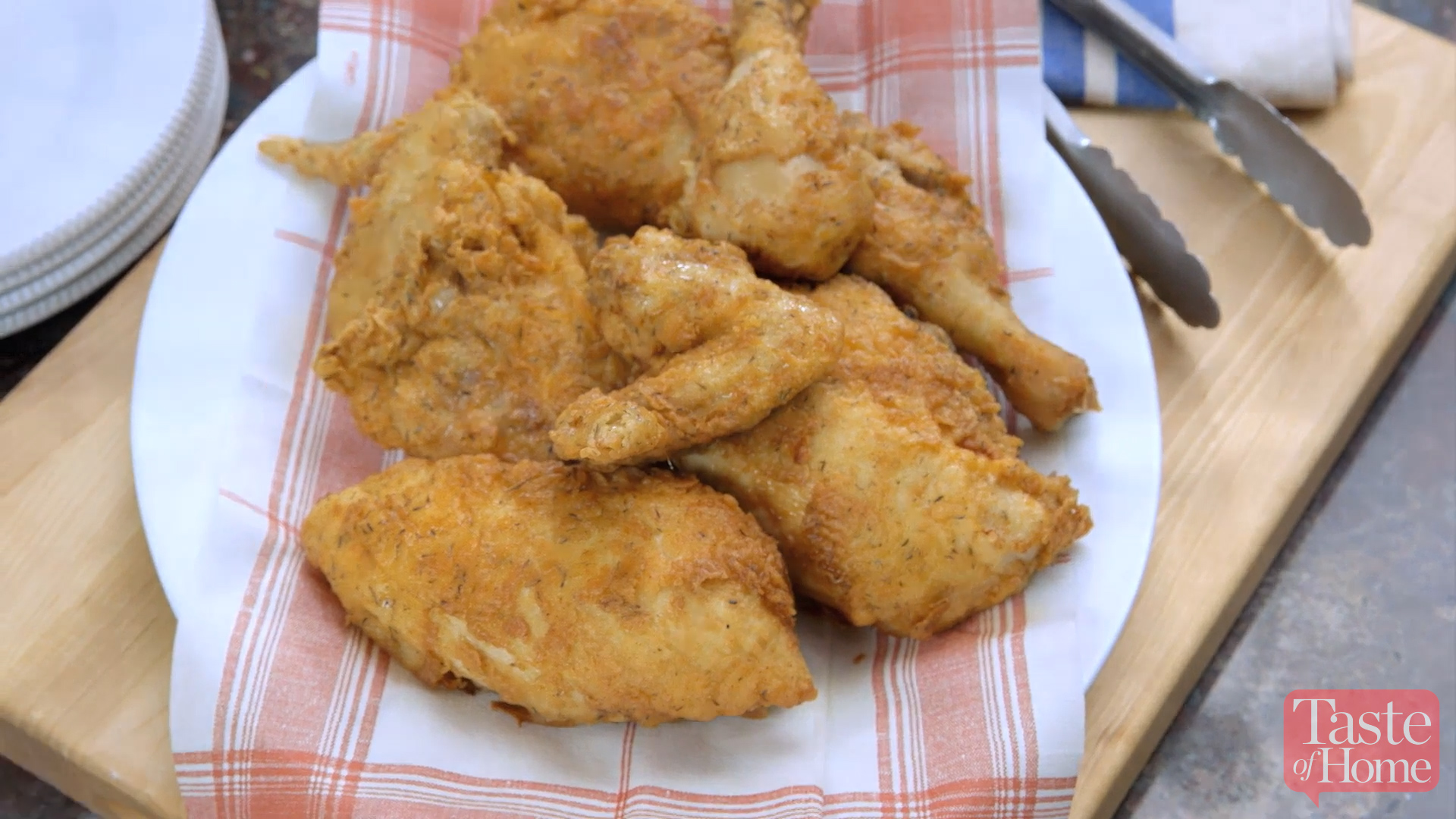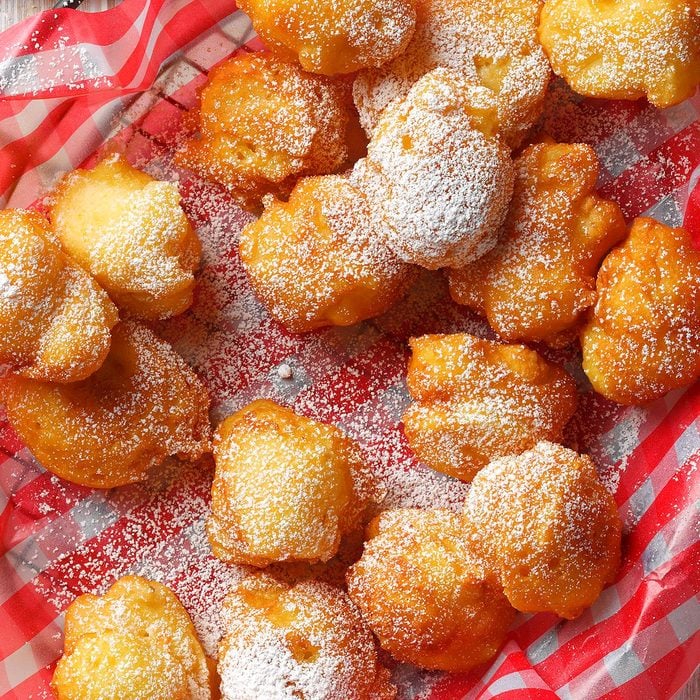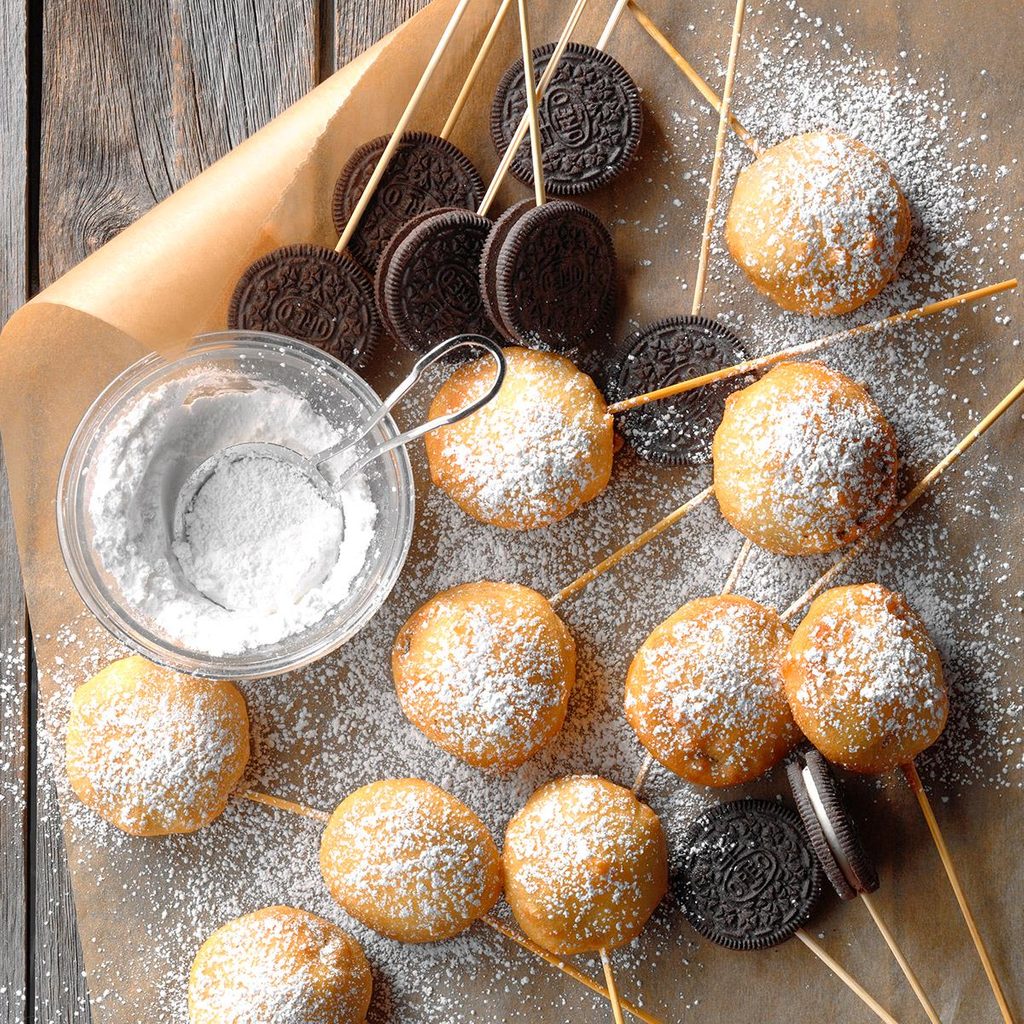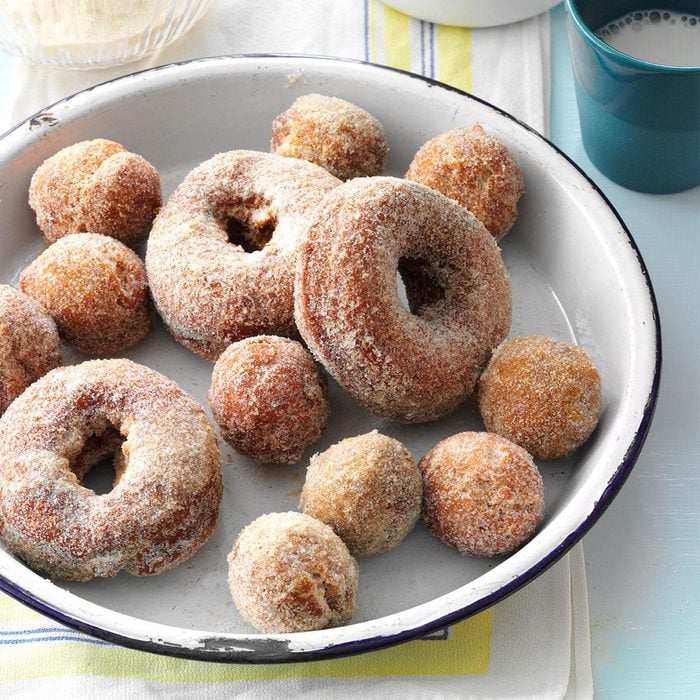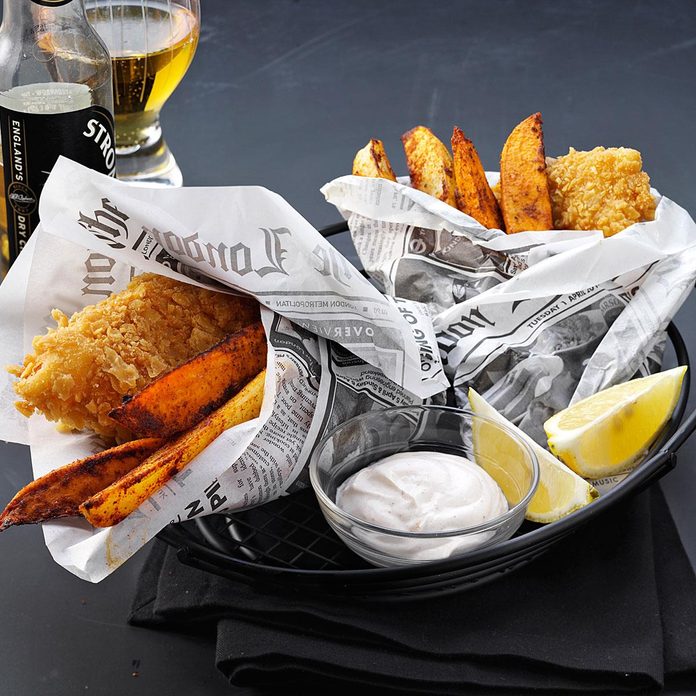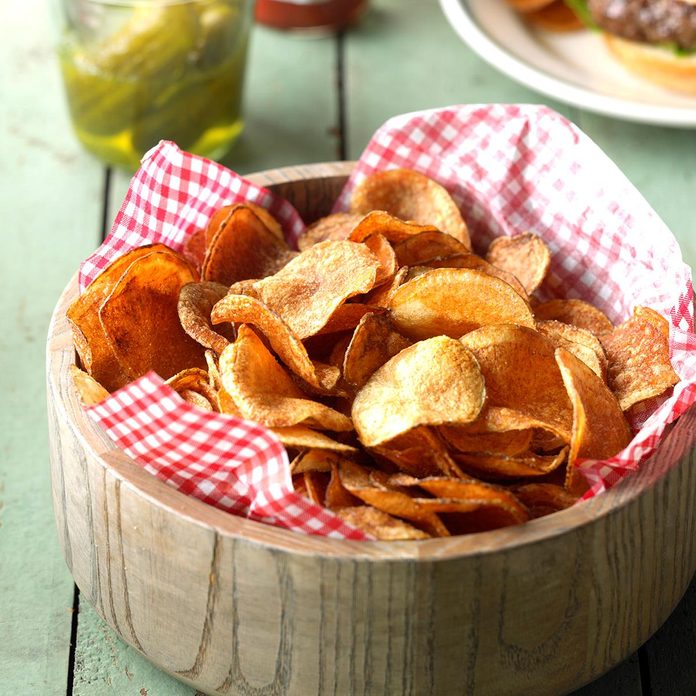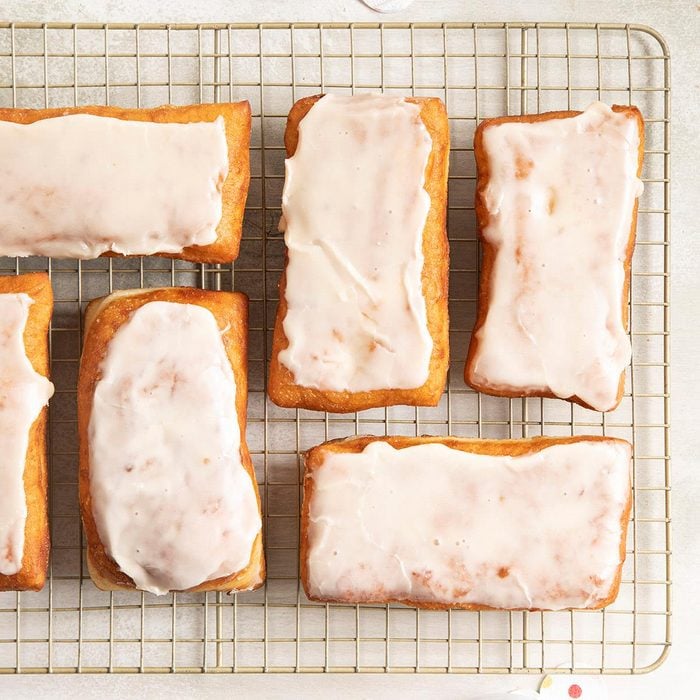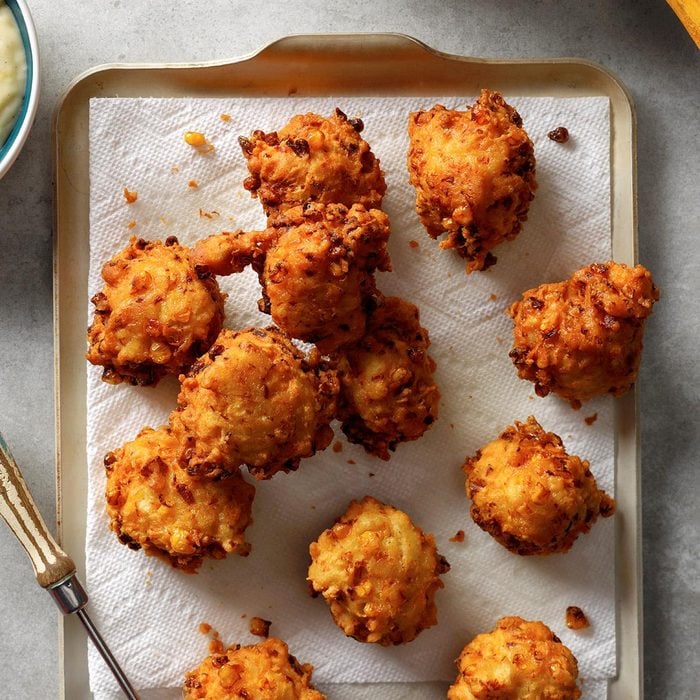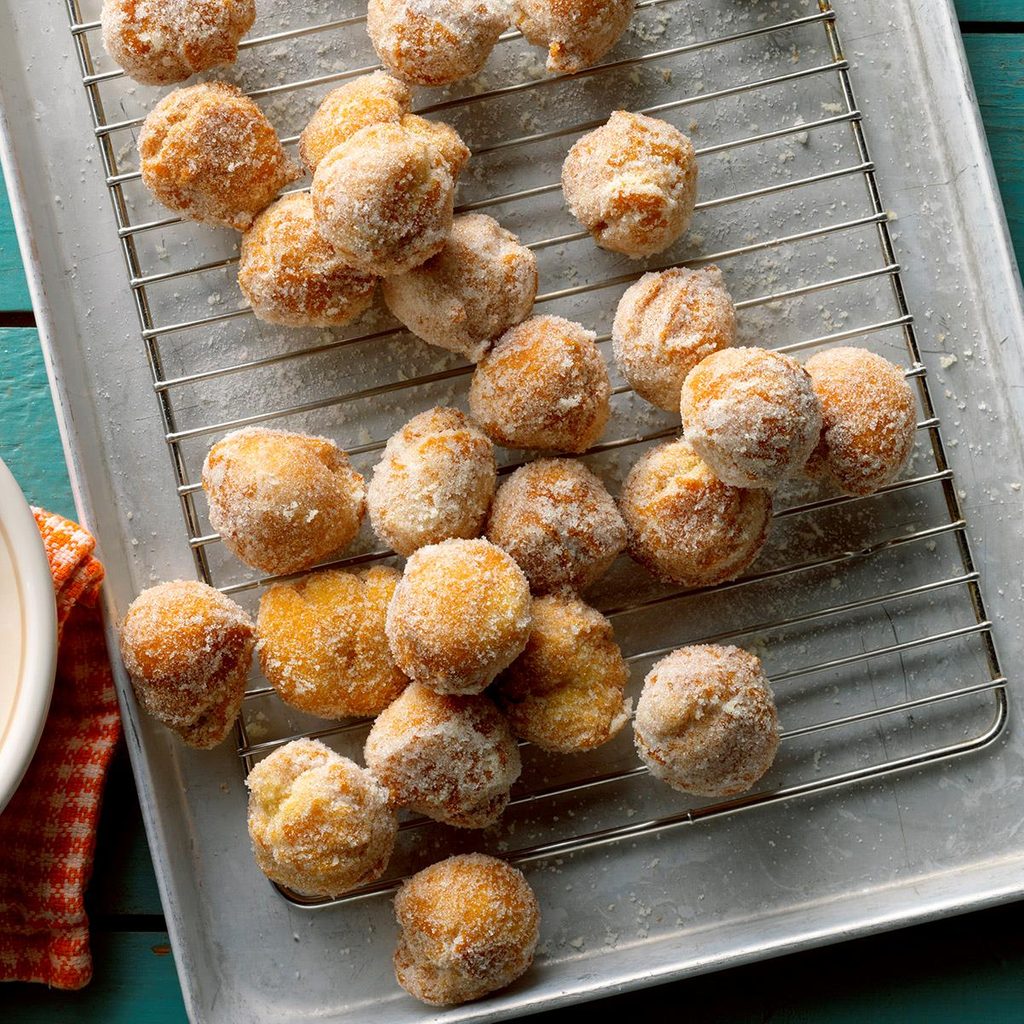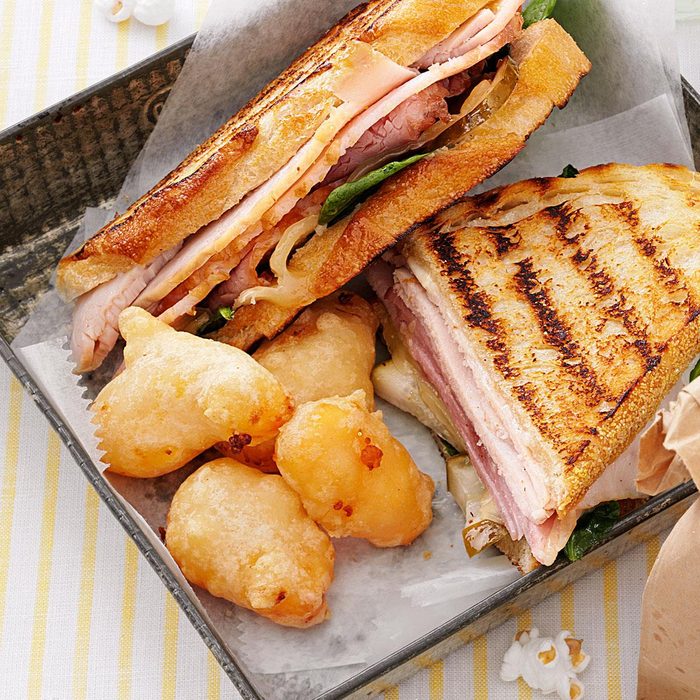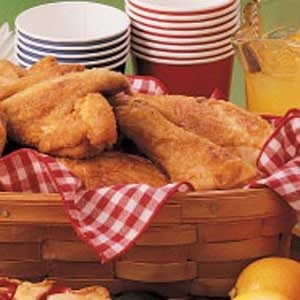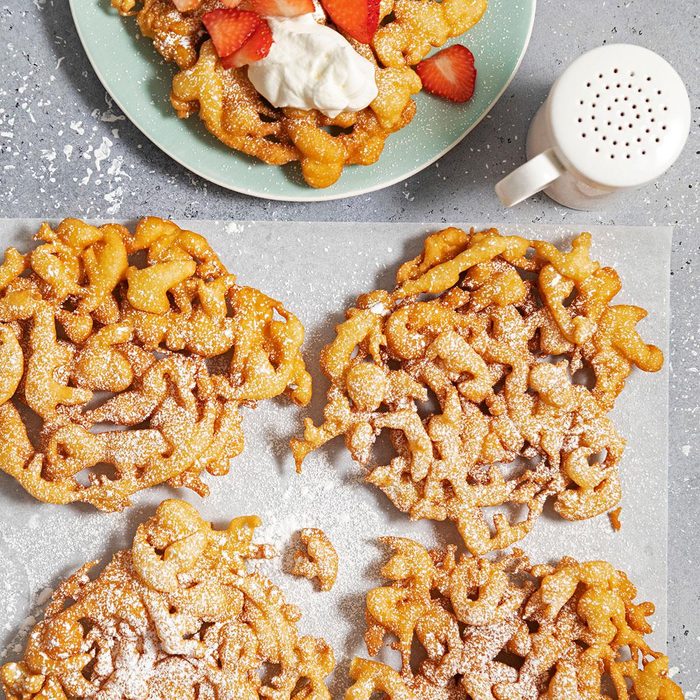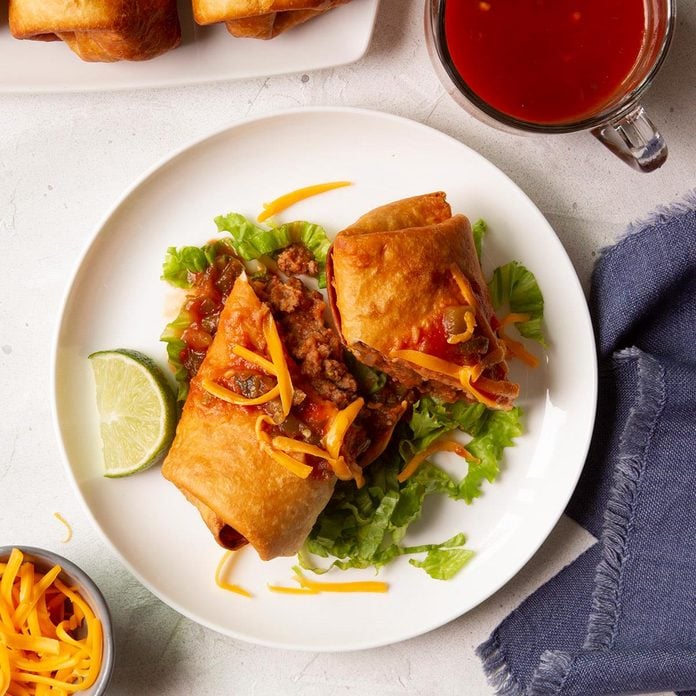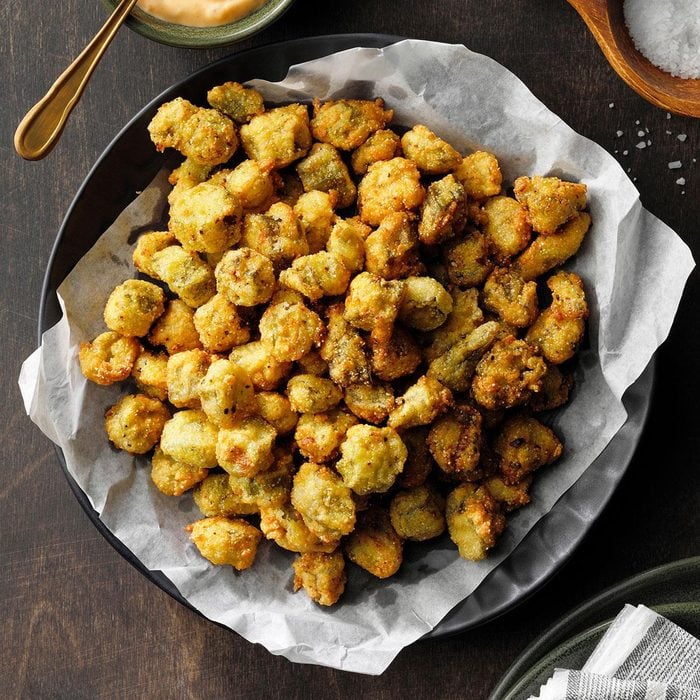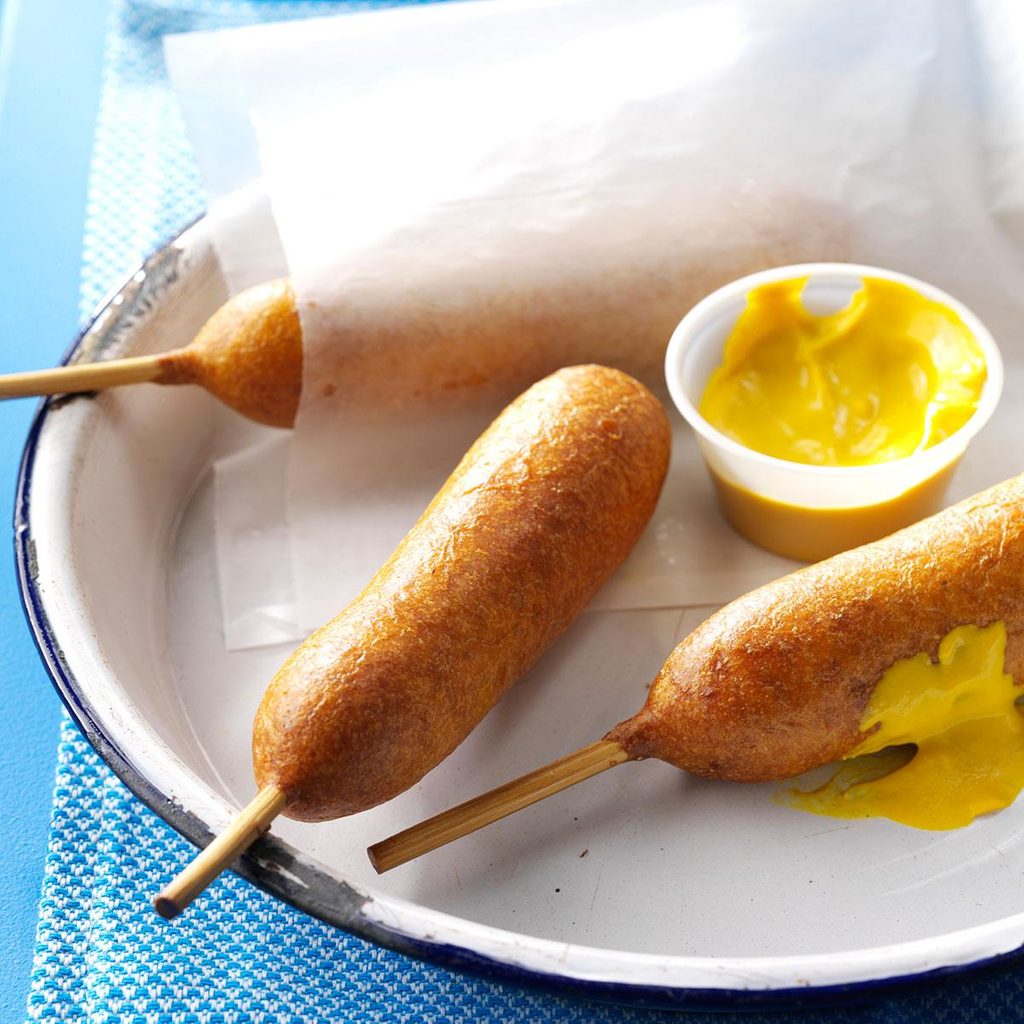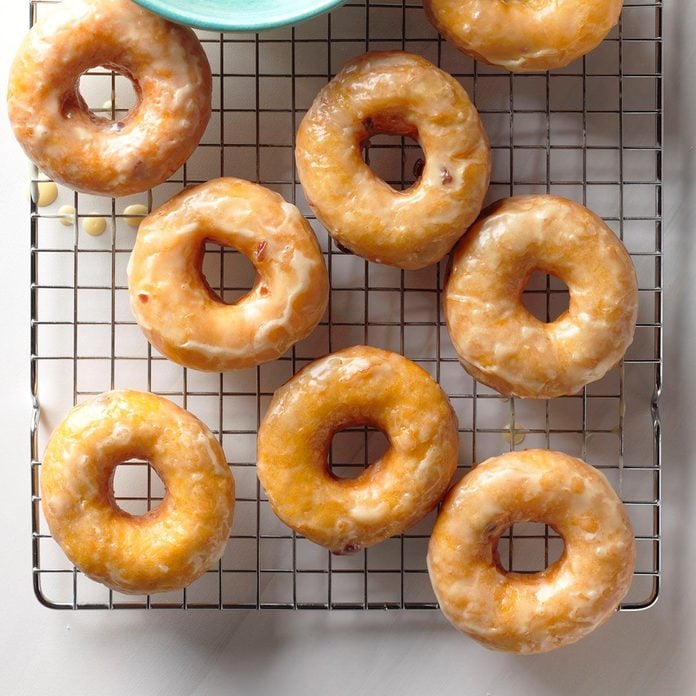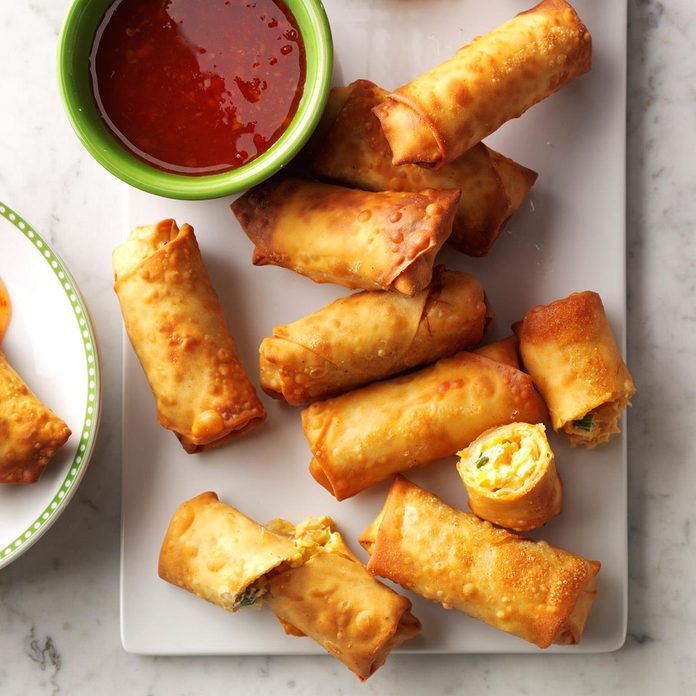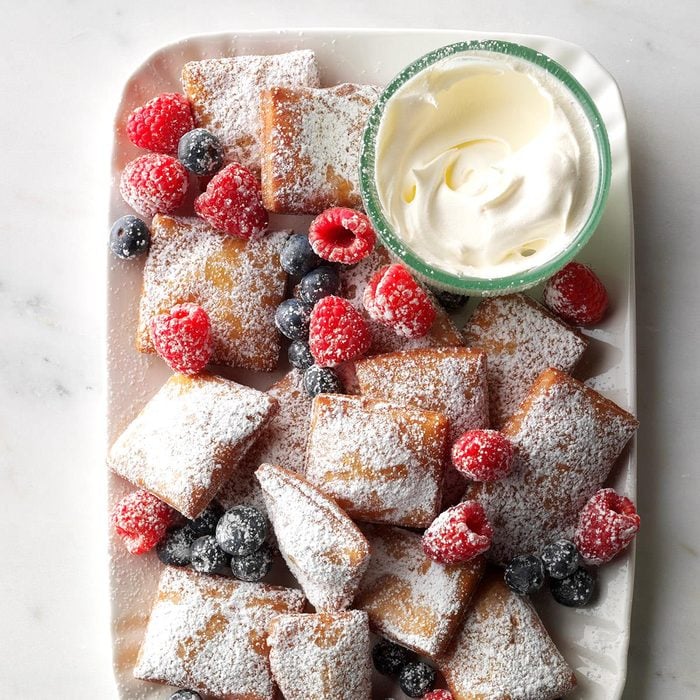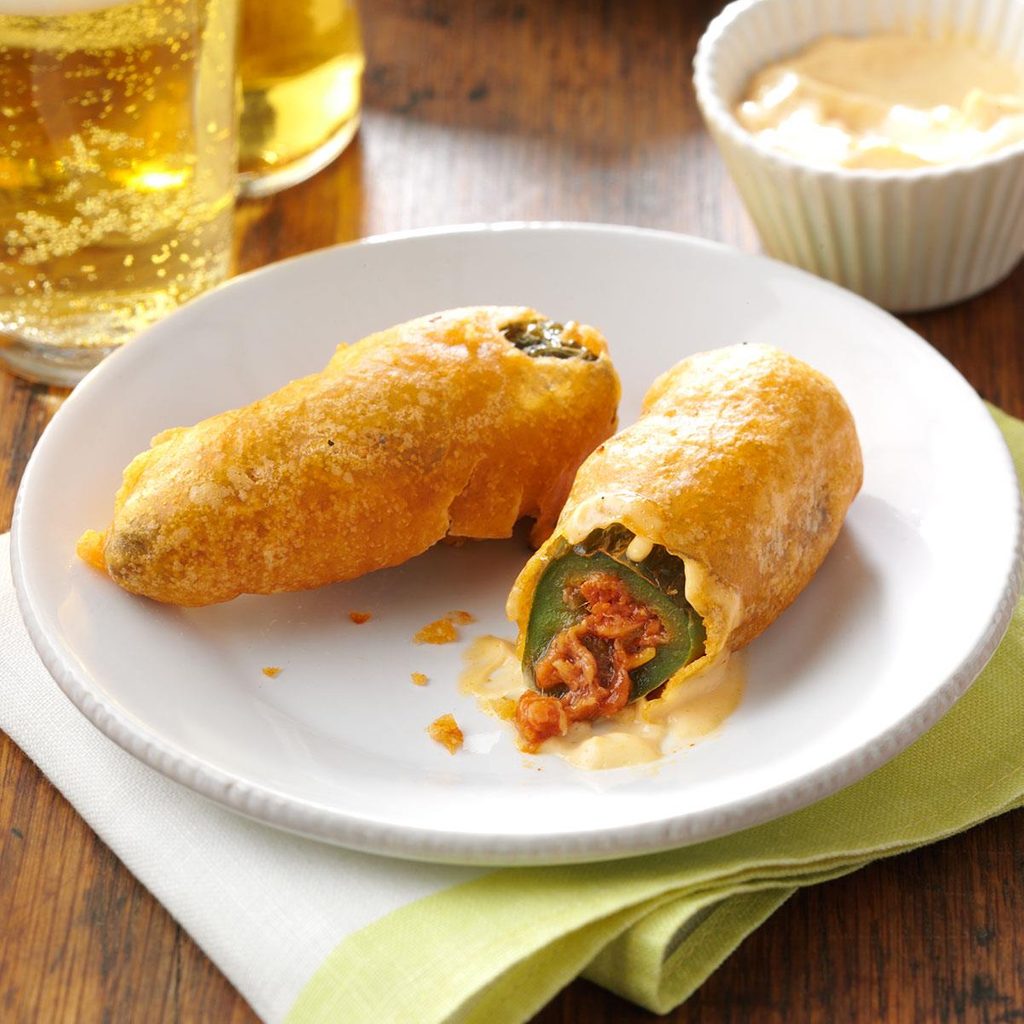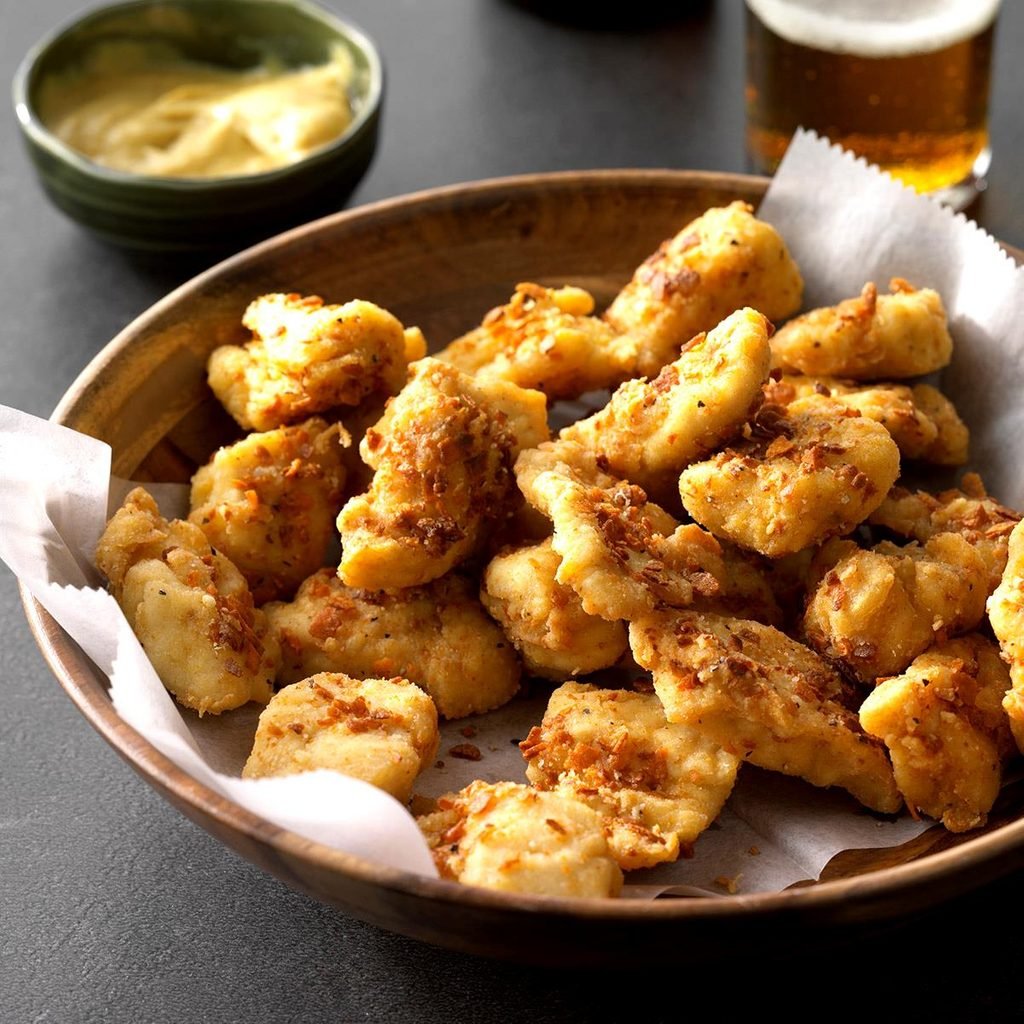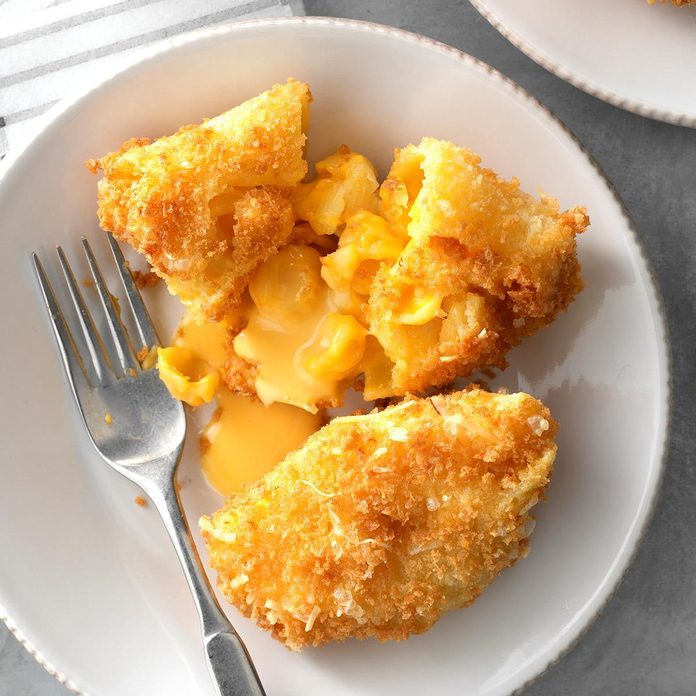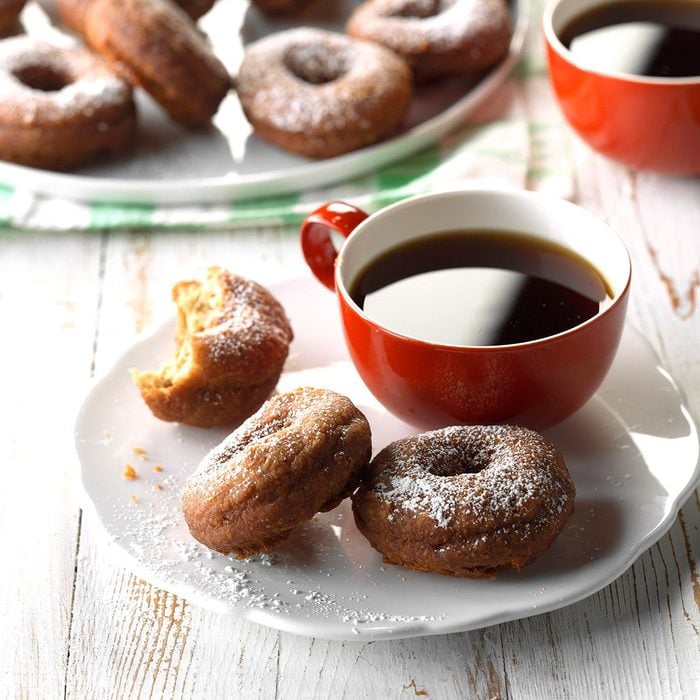Here’s How Long to Fry Every Food (Deep Frying Temperature Chart Included!)
Updated: May 09, 2023
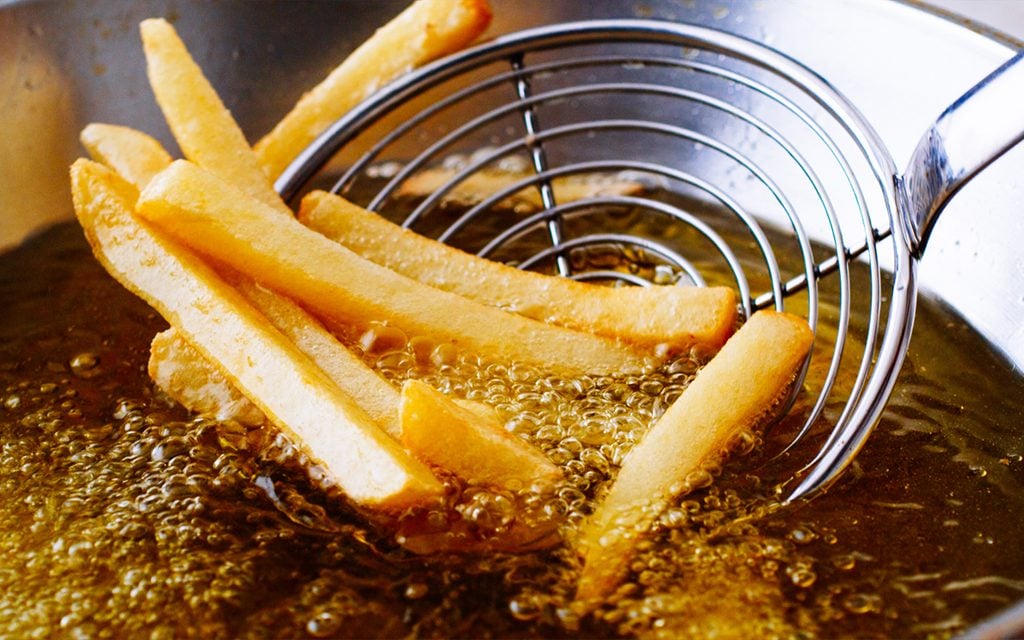
Find yourself searching for temperatures every time you fry? Bookmark this deep frying temperature chart.
With high temps and hot oil, fried food can be tricky to get just right. If you’re not careful, food goes from golden-brown to black in the blink of an eye. (New to frying? Read up on our comprehensive guide for how to deep fry with confidence.) That’s why we’ve compiled the times and temperatures for the most common fried foods in our deep-frying temperature chart, along with few helpful tips. By the way, here are the healthy oils you should have in your pantry.
What temperature should I set my deep fryer?
If you’re using a tabletop electric fryer, frying is as easy as setting the temperature and waiting until the pre-heat light illuminates. That said, we actually recommend deep frying on the stovetop. You can use a wok or any pan that’s tall enough to hold two to three inches of hot oil with room to spare. Dutch ovens are our favorite because it’s nearly impossible to overload them with food and cause an oil spill, which could be really dangerous. This is the best pan for deep frying according to our Test Kitchen experts.
The best way to know the temperature of your cooking oil is to use a long-stem fry thermometer (like this one). Place it in the pan, turn the heat to medium-high, and wait until the temperature reaches the desired setting according to the chart below. Then, turn the heat down to medium and add your food. Easy, peasy!
What is the normal temperature range for deep frying?
Deep frying is done at high temperatures, usually between 350 and 375 °F. Since you’re heating the oil much higher than it gets in a pan or the oven, it’s super important to choose the right type of cooking fat.
Some oils are better suited for deep frying than others because they have a high smoke point—the temperature at which the oil starts to smoke and turn acrid. We like using heart-healthy oils like safflower oil and rice bran oil (which can be heated to almost 500° F). Other great choices are peanut oil, sunflower oil, or canola oil. Choose the best oil for frying fish.
Read more about the best oils for frying.
Deep Frying Temperature Chart
Looking for a cheat-sheet for deep frying times and temperatures? Look no further, Once you hit the target temperature, drop your ingredients and set the timer. For meat items, don’t forget to check the internal temperatures listed below to make sure the insides are safe to eat. Otherwise, your food is usually done when it becomes golden brown and crispy on the outside. And always keep these tips in mind:
- Never overcrowd the pan, which can cause the oil temperature to drop too low. Low oil temps not only take longer to cook, but they can also make your fried food taste soggy.
- Let the oil come all the way back up to temp before adding the next batch.
| Oil temperature | Time | Internal temperature | |
Battered fish |
365 °F | 3 to 5 minutes | 145 °F |
Catfish nuggets |
365 °F | 3 to 5 minutes | 145 °F |
Chicken wings |
375 °F | 8 to 10 minutes | 165 °F |
Chicken strips and chicken tenders |
350 °F | 3 to 5 minutes | 165 °F |
Churros |
375 °F | 2 to 4 minutes | |
Crispy Fried Chicken |
375 °F | 12 to 15 minutes (finish cooking in a 200 °F oven, if needed) | 165 °F |
Doughnuts |
375 °F | 2 to 4 minutes | |
Egg rolls |
350 °F | 4 to 6 minutes | |
Empanadas |
360 °F | 2 to 4 minutes | |
Falafel |
350 °F | 4 to 6 minutes | |
French fries |
325 °F then 400°F | Blanch first at 325°F for 3 to 4 minutes; then fry at 400°F for another 3 to 4 minutes | |
Hush Puppies |
365 °F | 2 to 3 minutes | |
Mozzarella sticks |
350 °F | 2 to 3 minutes | |
Onion Rings |
375 °F | 2 to 4 minutes | |
Oysters |
375 °F | 1 to 2 minutes | 130 °F |
Potato chips |
375 °F | 8 to 10 minutes | |
Prawns |
350 °F | 3 to 4 minutes | 130 °F, until the flesh is white, opaque and firm. |
Samosa |
350 °F | 8 to 10 minutes | |
Turkey |
375 °F | 3 to 5 minutes per pound | 165 °F |
Vegetables |
375 °F | 1 to 2 minutes |
Give our time and temperature a chart with 24 of our best deep fryer recipes.





















